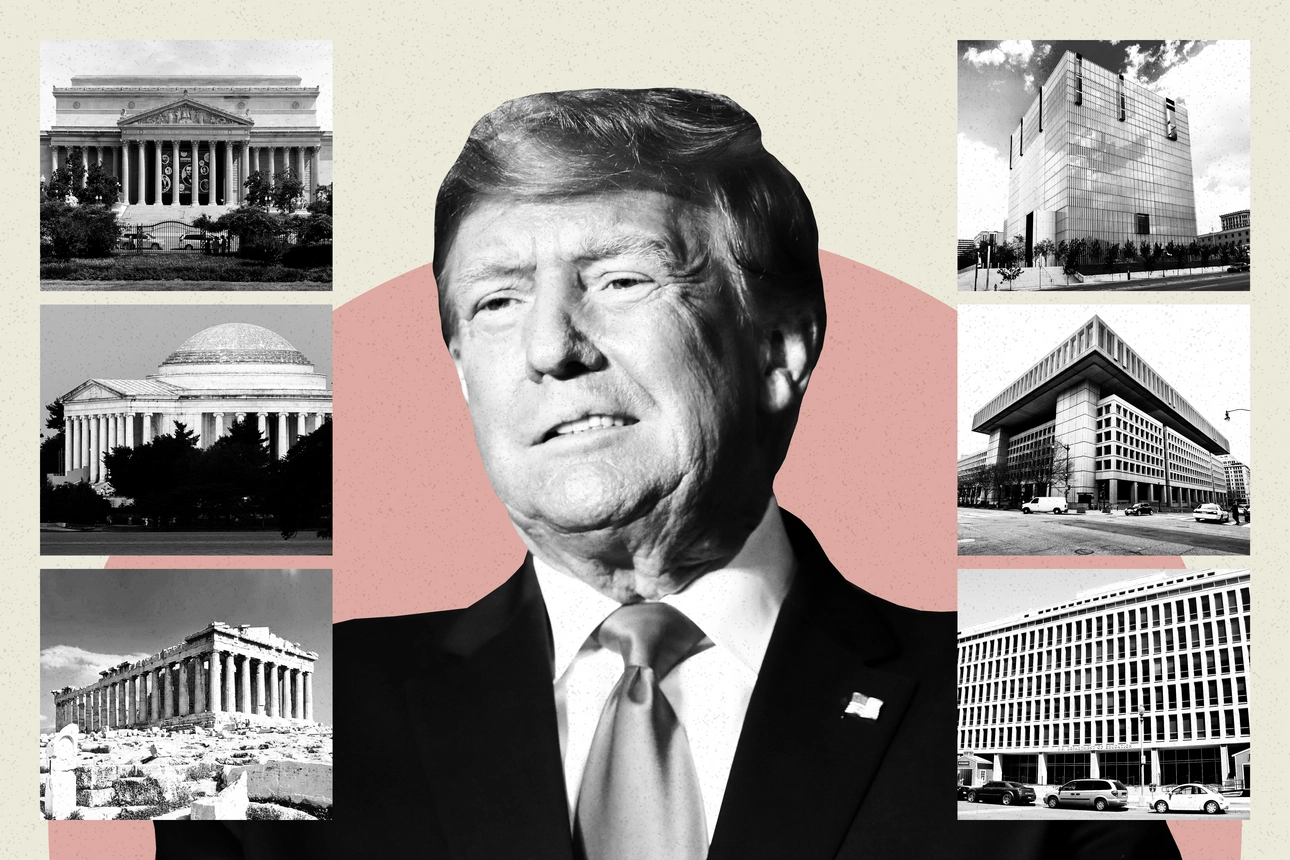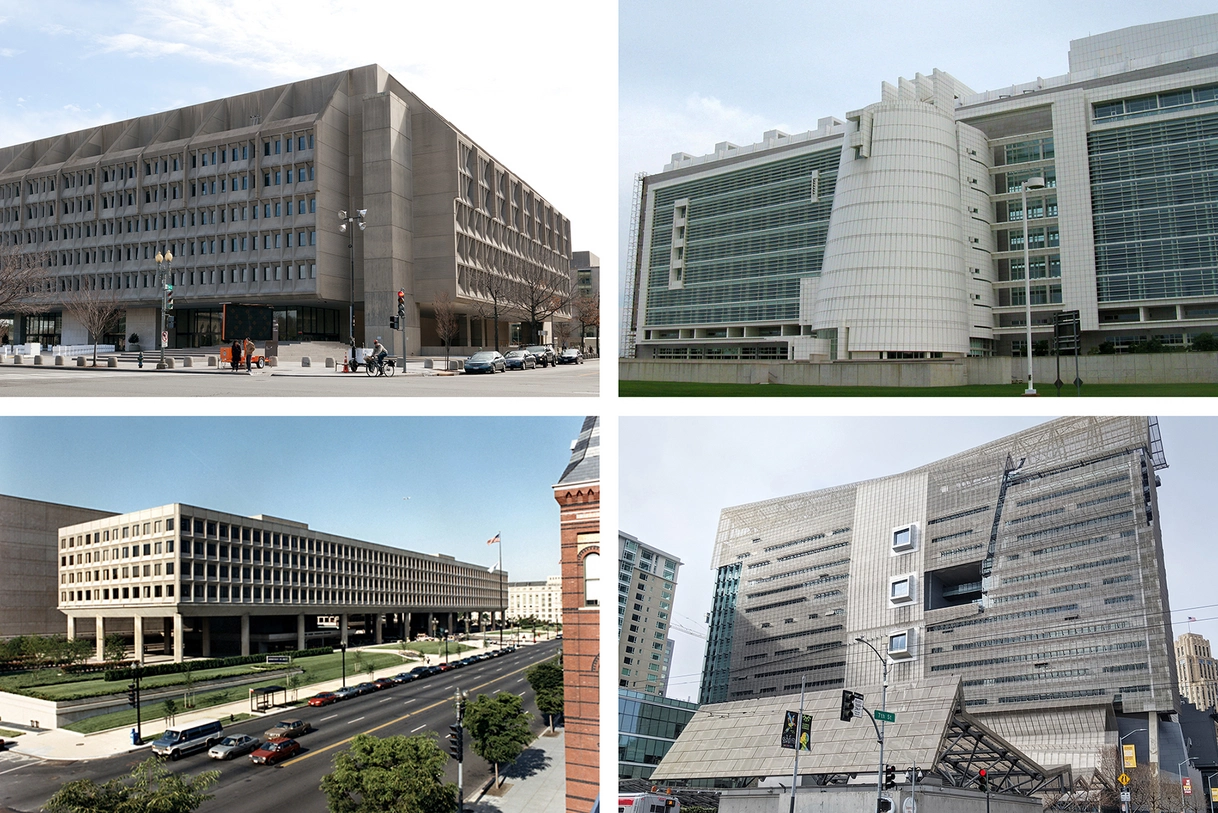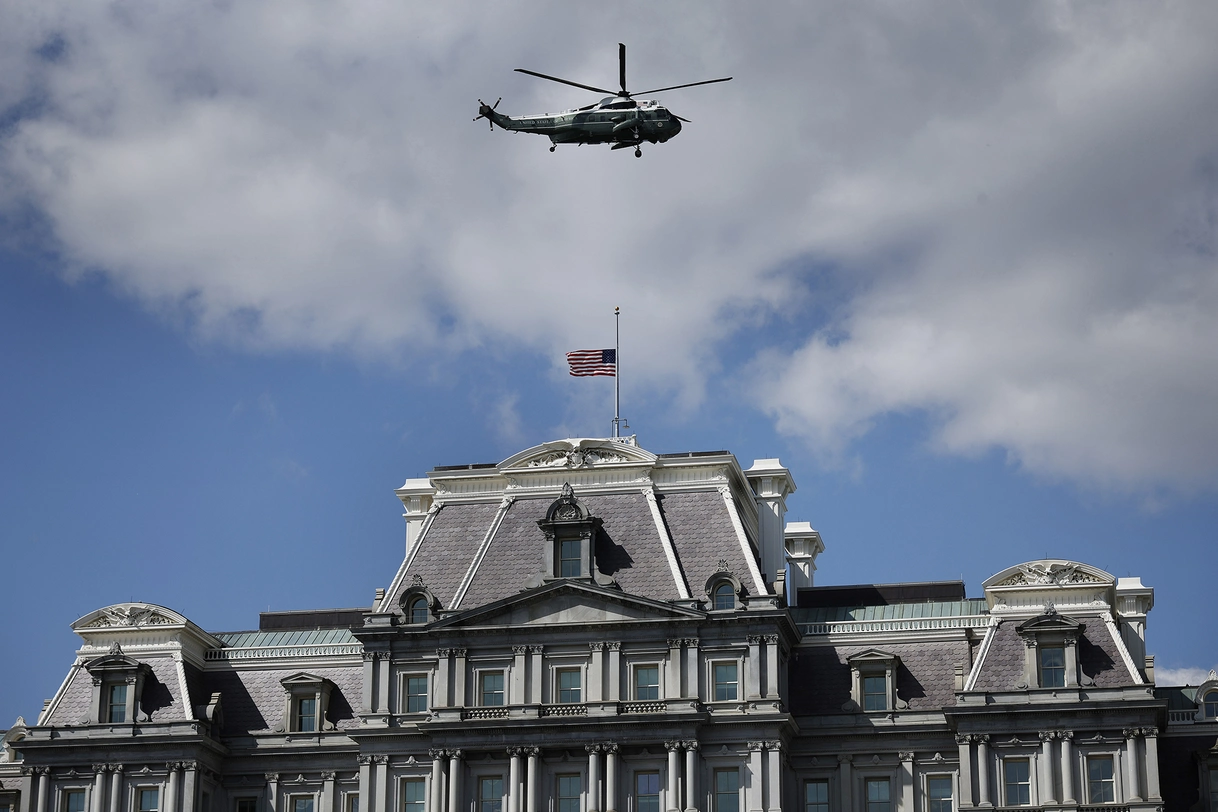Republicans Want To Require A Single Architectural Style In Washington
Republicans want to require a single architectural style in Washington. Should the government of the United States establish an official national architectural style? Should the nation's capital exclusively have public structures based after ancient Athens or Rome?
George EvansJul 14, 202320510 Shares280962 Views

Republicans want to require a single architectural style in Washington. Should the government of the United States establish an official national architectural style? Should the nation's capital exclusively have public structures based after ancient Athens or Rome?
The questions revolve on a resurrected culture-war struggle over an unexpected Beltway institution: the General Services Administration, the staunchly unappealing government body in charge of federal office buildings, US courthouses, and other bureaucratic outposts.
A new Republican-sponsored initiative would make "classical architecture" the "default" design for new federal buildings in Washington, and classical and traditional architecture the "preferred" style for most government buildings around the country.
Architects who deal in newfangled design-school fads should ready themselves for a harsh winter: Under the proposed Beautifying Federal Civic Architecture Act, presented in the Senate by Sen. Marco Rubio (R-Fla.) and in the House by Rep. Jim Banks (R-Ind. ), plans "derived from the forms, principles, and architecture of Greek and Roman antiquity" would receive official government support.
GSA is the focus of a new Republican-sponsored initiative that would make "classical architecture" the "default" design for new federal buildings in Washington, and classical and traditional architecture the "preferred" style for most government buildings around the country.
Architects who specialize in newfangled design-school fads should ready themselves for a harsh winter: Under the proposed Beautifying Federal Civic Architecture Act, filed in the Senate by Sen. Marco Rubio (R-Fla.) and in the House by Rep. Jim Banks (R-Ind. ), plans "derived from the forms, principles, and architecture of Greek and Roman antiquity" would obtain the government's official approval.
And any GSA employees who approved projects that deviated from the default style would have to justify their actions to Congress and the president, with adequate time to return to the usual appearance if necessary.
Another bill presently before the House would give such bureaucrats even more leeway. The Democracy in Design Act, introduced by Nevada Democratic Rep. Dina Titus and supported by the American Institute of Architects, would codify a 61-year-old document known as the "Guiding Principles for Federal Architecture," which was created by a JFK-era panel led by future Sen. Daniel Patrick Moynihan.
The 1962 Moynihan memo said, among other things, that "the development of an official style must be avoided." What exactly is going on here? How come politicians are presenting legislation that mention Michaelangelo and John Russell Pope while specifying the forbidden details of Brutalismand Deconstructivism?
If sitting members of Congress have time to discuss whether fluted Corinthian columns are preferable to an unadorned modernist front, a visitor just arriving in Washington may believe it's a very excellent indicator of national health.
And any GSA employees who approved projects that deviated from the default style would have to justify their actions to Congress and the president, with adequate time to return to the usual appearance if necessary. Another bill presently before the House would give such bureaucrats even more leeway.
The Democracy in Design Act, introduced by Nevada Democratic Rep. Dina Titus and supported by the American Institute of Architects, would codify a 61-year-old document known as the "Guiding Principles for Federal Architecture," which was created by a JFK-era panel led by future Sen. Daniel Patrick Moynihan.
For many years, there was no party distinction in how Democrats and Republicans treated the aesthetics of government buildings. For better or worse, federal architecture followed current architectural trends rather than the political party in control. That changed with the 45th president.
The appearance of federal buildings has suddenly become the focus of a populist-inflected campaign against architectural elites and the bureaucrats who employ them.
In 2020, two executive orders issued by former President Donald Trump took aim at modernism on federal property: one required that art in new government buildings depict historically significant Americans or American ideals — and that the depictions not be in any abstract or modernist style.
A second measure achieved something similar to what the current GOP plan would do: it established classical architecture as the favored style for federal buildings.
The edicts sparked a fierce outcry from an already agitated architecture community. The preferred-style guideline was created by the National Civic Art Society, a conservative Washington charity that campaigns for "the classical tradition" and has attacked contemporary architecture as "dehumanizing."
The group has long chastised the American Institute of Architects, a professional organization that had expressed concern over Trump's new regulation.
Trump had already appointed the Civic Art Society's president, Justin Shubow, a conservative architectural critic, to the U.S. Commission on Fine Arts, which monitors new structures in the capital. Shubow, who was not even an architect, was appointed to the commission's chairship in January 2021, as Trump was leaving office.
President Joe Biden withdrew the executive orders and dismissed all but one of Trump's appointments from the Fine Arts Commission shortly after entering office, replacing Shubow with acclaimed contemporary architect Billie Tsien.
But, like with so many other interruptions during the Trump administration, things did not return to normal – in part because Shubow is a tenacious advocate, and in part because the traditionalists have a point, or at least a half-point.
And here's the other part of the point: there are a lot of awful government buildings out there! The expansion of government in the decades following World War II happened to coincide with one of the most vilified periods in public architecture.
Government properties, such college campuses, have been among the most visible violators of the modernist period, maybe because the persons commissioning the structures were not the ones who would have to live or work in them.
People are significantly less respectful to the artists drawing out the drawings for their own private house or company. According to Shubow, the issue is embedded directly within the 1962 Moynihan text his opponents want to entrench in law.
“„Design must flow from the architectural profession to the Government and not vice versa.- Justin Shubow
He claims that the wording, rather from being a show of support for inventiveness, actually forces public officials to forgo their role of keeping an eye on the contractors. (He points out that the AIA, which has criticized the GOP bill in the name of free speech, isn't exactly a dispassionate academic organization: it's a trade association for architects, i.e. the very same contractors.)
Shubow's company commissioned a study that found that a sizable majority of Americans prefer more conventional styles of architecture. Shouldn't a democratically elected government make certain that its structures don't alienate the people who pay for them?
Well, sure. However, the new legislation goes beyond that. It takes a cruelly backward-looking stance in a society that has always been about dynamism and change by raising the status of the Greek - and Roman-inflected structures preferred by Thomas Jefferson and his cohort.
So, while it's true that the capital was founded by people obsessed with (small-r) "republican" style as they set about creating a fledgling republic in an age of monarchies, it's also true that said obsession extended far beyond architecture to things like clothing — which, thankfully, no one is attempting to legislate in 2023.
The concept of enshrining one style in legislation also ignores the fact that preferences and viewpoints evolve.
Many people, including me, like the aesthetic of Washington, D.C.'s Federal Triangle, a gigantic 1930s constellation of Neoclassical federal buildings that includes the Justice Department, the National Archives, and the Department of Commerce. Others argue its sweep of columned edifices resembles fascist, something no one could have predicted when the idea was initially conceived in the 1920s.
The French Second Empire-style Eisenhower Executive Office Building, built next to the White House in the 1870s and awkwardly clashing with its Neoclassical neighbor, on the other hand, spent years as one of Washington's most despised buildings,
“„The greatest monstrosity in America.- Harry Truman
Harry employing this kind of contempt that people nowadays reserve for space-age concrete slabs like the Departments of Health and Human Services or Education. Unlike HHS and Education, the Eisenhower building is now regarded as a lovely old pile that is a part of the city's fabric. Things change.
For what it's worth, while there's probably no traditionalist architecture as reviled as the brutally Brutalist FBI headquarters on Pennsylvania Avenue, there are plenty of bland Neoclassical structures of recent vintage, such as the Ronald Reagan building just down the street.
A unified capital would be tedious. In a democracy, there will always be friction between those who push the edge and those who follow popular tastes, between adhering to tradition and breaking the pattern.
That's especially true in a large and diverse country like this one, where the government's 8,397 buildings are as likely to be in sunny Southern California or French-settled Louisiana as in L'Enfant's traditional D.C.
Style legislation appears to be a terrible idea. In person, Shubow, the legislation's most ardent supporter, comes across as a smart grad student — hardly the you-kids-get-off-my-lawn fanatic depicted by opponents when Biden booted him from the Fine Arts Commission.
He claims that the measures make it more difficult to commission non-traditional designs, notably in Washington, D.C.
He points out that the description of classical and traditional in the legislation is really rather wide, embracing Gothic, Spanish Colonial, and Pueblo Revival where appropriate, as well as wording concerning regional customs. The only two distinct styles targeted by the law are Brutalism and Deconstructivism from the twentieth century.
Even as he criticizes modern architecture, Shubow seems positively optimistic, peppering his talk with terms like "beauty" and "uplift." The declared purpose of his group is to advocate for "beautiful, meaningful civic design."
“„I would love for there to be a congressional hearing, where members can be shown photos of the ugly avant-garde buildings the government has been constructing.- Justin Shubow
“„The founding fathers consciously chose the classical style for the core buildings of government. They saw that classical architecture was timeless and time honored. And they wished to harken back to democratic Athens and republican Rome. They started a trend that continued for 150 years, and Americans came to associate classical architecture as the architecture of American democracy.- Justin Shubow
Of course, a similar obsession with columns and pediments was connected with twentieth-century totalitarians who imposed triumphant redesigns on cities like Berlin and Rome in the sake of displaying militaristic ambitions. At a time when American democracy is shaky, it's little surprise that Trump's quest for classical structures was perceived as imperial rather than democratic by many.
That brings us back to the oddity of this political moment, with a traditionalist right replacing older conservatives whose main federal-construction interest not long ago could have been staying on budget and learning from private-sector experts.
One of the two proposals currently before Congress has flowery language about the need to "uplift and beautify," "inspire the human spirit," "ennoble the United States," and "command general public respect."
The other codifies earlier instructions that instructs government builders to "reflect regional architectural traditions," to promote "the work of living American artists," and to avoid having bureaucrats impose an official style on the designers.
Which of these sounds like an activist government party? Ideological categories, like so many other facets of the current culture wars, are in change.
However, both sides are claiming the mantle of democracy — the GOP bill by saying bureaucrats should defer to popular tastes, and the Democratic-led measure by opposing federal mandates and advocating for regional quirks (which may be one reason it has some bipartisan support).
Given the current political atmosphere, neither bill is likely to become law. Shubow, citing polling data on public attitudes toward architecture, says he's happy for Democrats to support the Banks and Rubio legislation.
However, it appears that federal building design is now as divisive as everything else. Titus' measure enshrining the 1962 design paper, which was first proposed in reaction to Trump's order, will have a similar uphill battle this time.
Final Words
Nonetheless, Shubow is pleased with a June report from the Government Accountability Office, which urges the GSA to explicitly request and include community input on construction designs — a result, he claims, of Trump's classical-architecture instructions.
Anyone in politics, regardless of their views on current architecture, will find it difficult to reject this proposal. Legislating a default national style may sound un-American to elected officials, but publicly telling the general population that their opinions don't matter is plain suicidal.
Jump to
Latest Articles
Popular Articles


